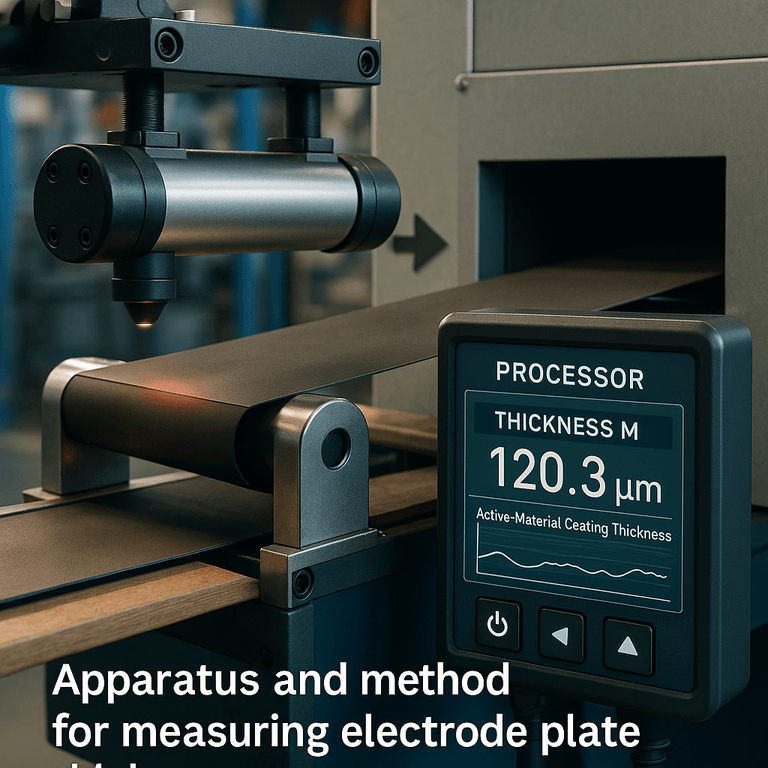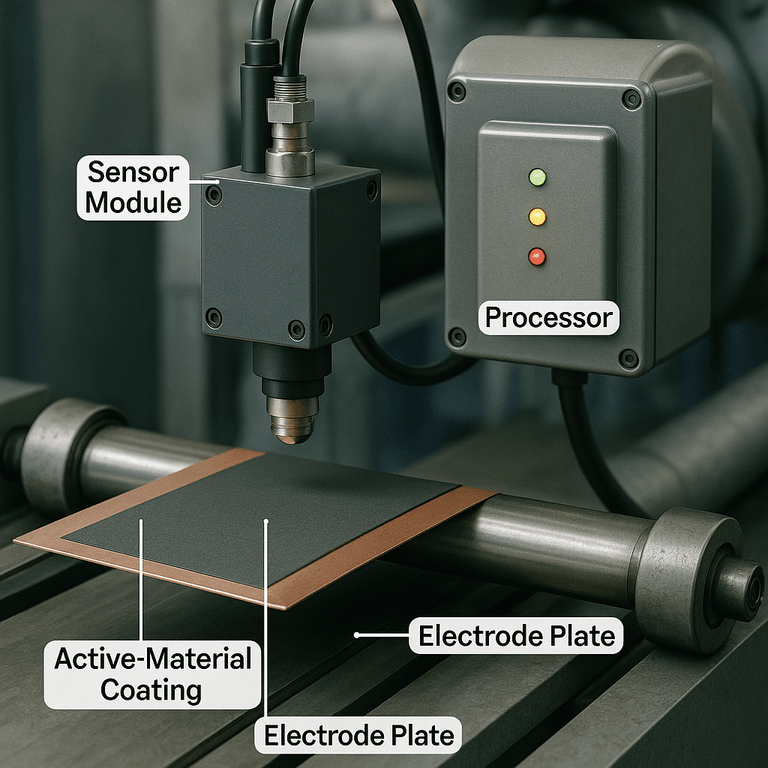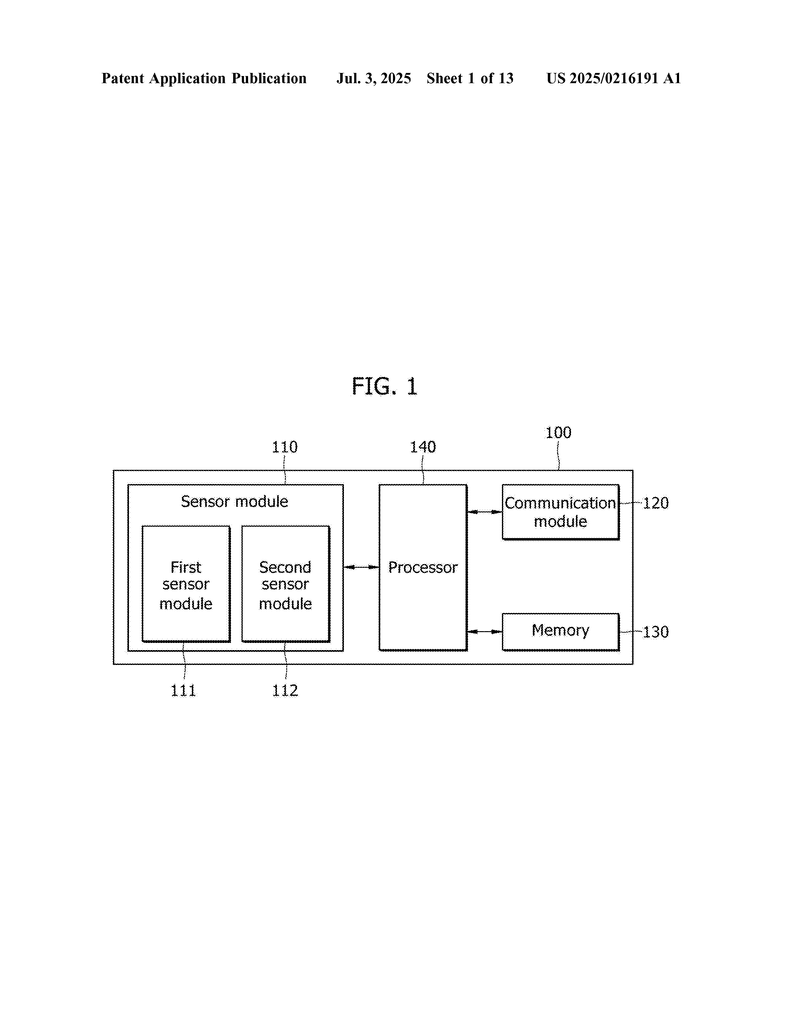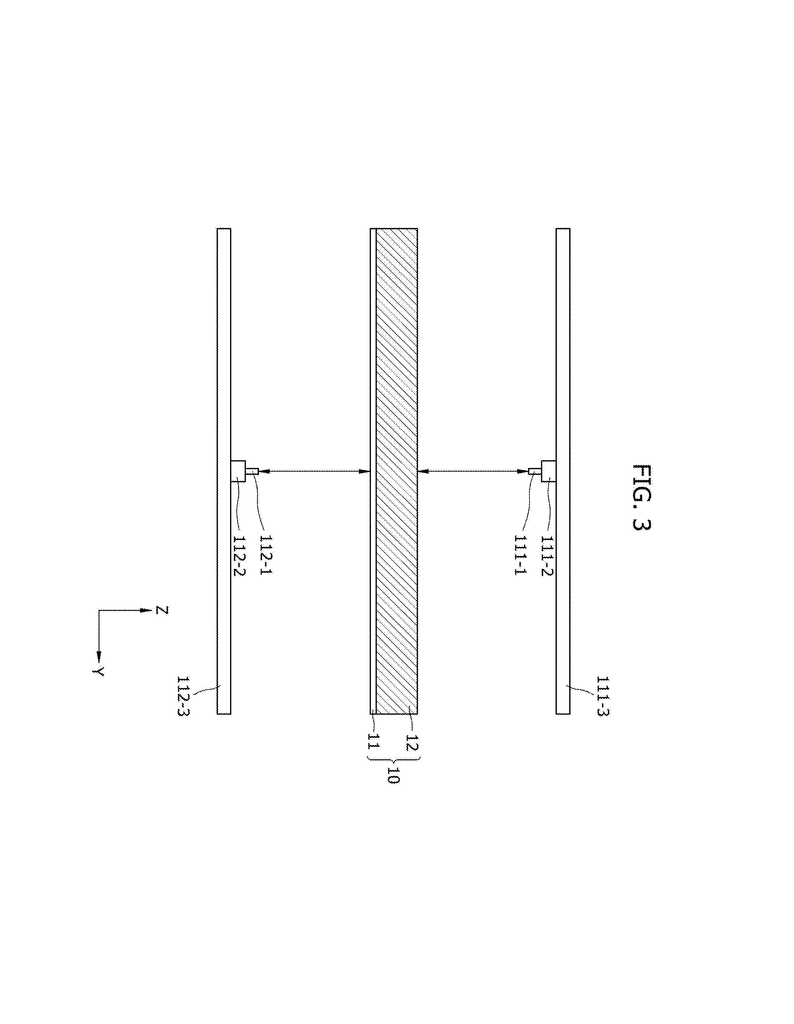Invented by KIM; So Hun, KIM; Gi Sung, SEO; Won Sub, PARK; Jin Seo, PYO; Young Hak, CHOI; Kyung Taek, KIM; Byoung Kuk
Keeping batteries safe and powerful starts with small details. One important detail is how thick the coating on the battery’s electrode plates is before the plates get dried. Today, a new invention is changing how this is done. Let’s break down what makes this system different, why it matters, and how it could make batteries work better for everyone.
Background and Market Context
Batteries power most of our favorite gadgets, from phones and laptops to electric cars. These batteries need to last a long time, hold a lot of power, and stay safe. To make sure batteries work well, companies must build them with great care, especially when making their insides, like the electrode plates. The electrode plate is a thin metal sheet with a special coating—called the “active material”—that stores and releases energy. If this coating is too thin, the battery might not work well. If it’s too thick, it can waste materials or cause safety problems.
Usually, measuring this coating’s thickness happens after the plate has already gone through a drying furnace. Why? Because once it’s dry, it’s easy to use certain tools, like radiation sensors, to check the thickness. But this approach has a big problem: if something goes wrong with the coating before drying—like a streak, lump, or thin spot—factories don’t catch it early. Fixing mistakes late wastes time, materials, and money. Sometimes, the error even makes it into finished batteries, leading to poor performance or recalls.
As the world moves to electric vehicles and bigger, better batteries, the need for perfect electrode plates keeps growing. Manufacturers want to spot and fix problems right away. That’s where this new invention comes in. It lets factories measure the coating before it’s dried, right after it’s put on the metal plate. This means issues can be found faster, and factories can react in real time. If the coating is off, the system can adjust the machines that apply the material, leading to fewer mistakes and better batteries.
This new process is important for several reasons. First, it saves materials by reducing waste. Second, it improves battery quality, making devices safer and more reliable. Third, it keeps production lines running smoothly, so fewer batteries end up in the scrap pile. As battery demand rises, these benefits mean big savings and happier customers.
Scientific Rationale and Prior Art
To appreciate how this new system works, it helps to understand what came before. In battery factories, making electrode plates is a careful process. First, a thin metal sheet—often aluminum for the positive side or copper for the negative side—moves through a coating machine. The machine spreads a paste (the active material) onto the metal. Then, the coated plate goes into a long, hot drying furnace to remove water or solvents, leaving the active material stuck to the metal. Only after this drying step do most factories check how thick the coating is.
Traditional thickness measurement uses radiation sensors, like X-rays or beta rays, which can “see” through the plate and measure the total thickness. These methods are accurate on dry plates but have problems with wet coatings. Wet coatings scatter the rays differently, making the readings less reliable. Plus, by the time a problem is seen, it’s too late to fix it. Bad plates have already gone through drying, using up energy and time. Detecting problems sooner is better for everyone.
Other methods try to use contact sensors or cameras to check thickness before drying. But wet coatings are sticky and soft. Touching them can mess up the coating. Cameras can see color or texture, but not always thickness. Laser sensors can be used, but they aren’t perfect. They can be tricked by heat or by changes in the coating’s surface. One big issue is that sensors themselves can bend or change shape when they get warm. This “thermal deformation” makes readings less accurate. Until now, no system has solved this problem well for wet, freshly coated electrode plates.
What makes this invention stand out is how it handles these challenges. It uses two laser sensors—one above and one below the moving plate—to measure distances to the plate’s surfaces without touching it. The system knows how thick the bare metal plate is before coating, so it can subtract this from the new reading to find the thickness of just the coating. Even more importantly, the system watches for errors caused by the sensors getting warm. It checks places on the plate where no coating is applied and uses these “bare spots” to spot and correct any mistakes caused by heat. This way, the system always gives the most accurate number for coating thickness, even as the machine heats up during use.
Previous systems couldn’t measure thickness accurately before drying, couldn’t adjust for sensor error, or couldn’t react quickly enough to fix coating problems during production. This invention does all three. It measures the wet coating, corrects for heat error, and connects to the coating machine so it can change the process in real time. This is a big step forward for battery manufacturing.
Invention Description and Key Innovations
Now let’s look at what this new system actually does, step by step, and why each part matters.
The heart of the system is a pair of sensors—one on top of the plate and one underneath. These sensors move together, side to side, across the plate as it passes through the machine, right after the coating is applied but before drying. They work without touching the plate, using laser beams to measure the distance to the surface. By measuring both the top and bottom, the system can work out the total thickness at each point across the plate’s width. Since the thickness of the metal plate (before coating) is already known and stored in the system, the processor simply subtracts this value from the total to get just the coating thickness.
But here’s where the real magic happens. As the sensors work, they get warm from moving and working. This warmth can make their mounting frames bend or stretch a tiny bit, which can throw off the readings. For example, a 10-degree temperature change can cause a small error—maybe just a fraction of a micrometer, but in battery making, even tiny errors matter. The system solves this by using the “bare spots” on the plate—places where the metal is not coated with active material. By checking the thickness at these spots, the system can see if the sensor readings are drifting because of heat. If the bare spot thickness is off, it means the sensor needs correction. The system uses special math (called interpolation) to work out what the error would be in the coated areas, and then subtracts this out. This way, every measurement is as accurate as possible, no matter how hot the factory gets.
Once the system has the true coating thickness for every spot across the plate, it can do even more. It sends this information back to the coating machine. If a spot is too thick, the machine can use less material; if it’s too thin, it can use more. It can adjust the speed of the pump, how much the valve is open, or even the gap in the part that spreads the coating (called the slot die). This is called “feedback control,” and it keeps the coating perfect, even if things change during production.
But the system doesn’t stop there. It can also spot coating defects, like streaks or gaps, as soon as they appear. It checks every column of coating (the plate is coated in stripes, not all at once) to see if any area is too thin compared to its neighbors. If there’s a spot that’s too thin, it sends a warning right away, so workers can stop the line and fix the problem before wasting more material. The system checks each strip and, if needed, divides it into smaller zones for even more detailed checking. This way, even small problems are caught before they turn into big ones.
All of this happens in real time, right as the plate moves through the machine. The result is faster production, less waste, better batteries, and fewer headaches for everyone involved.
What really sets this invention apart is how it brings together several clever ideas:
First, it measures the wet coating, not just the dry one. This means problems are caught sooner.
Second, it uses pairs of sensors and smart calculations to always give the true thickness, fixing errors caused by heat or movement.
Third, it connects to the coating machine so it can fix problems automatically, not just report them.
Fourth, it checks for defects in detail, so bad spots are found and fixed right away.
All of this makes battery production smoother, safer, and less wasteful.
Conclusion
This new electrode plate thickness measurement system is more than just a better ruler—it’s a smarter way to make batteries. By checking the coating before drying, fixing sensor errors on the fly, giving instant feedback to the coating machine, and catching defects right away, the system helps factories make more batteries with less waste and fewer mistakes. As the world needs more and better batteries, these improvements will help everyone, from factory workers to people buying the latest electric car or smartphone. This invention points the way to a future where every battery is safer, stronger, and built just right.
Click here https://ppubs.uspto.gov/pubwebapp/ and search 20250216191.




